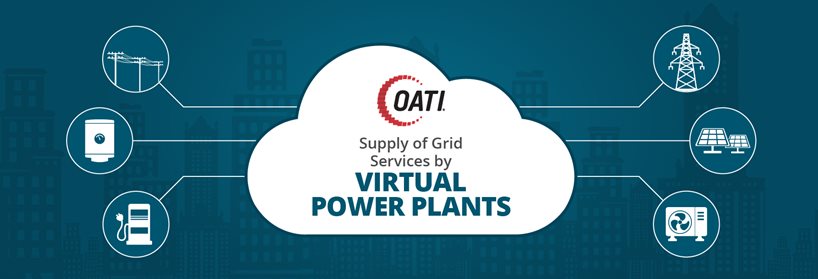Home » Blog » Grid Modernization » Supply of Grid Services by Virtual Power Plants
Supply of Grid Services by Virtual Power Plants
With increased regulatory requirements for Non-Wires-Alternatives (NWA) and continued proliferation of Distributed Energy Resources (DERs) and microgrids, the concept of supplying grid services from Virtual Power Plants (VPPs) is becoming a mainstream industry activity. A VPP is an aggregate group of demand-side and DERs that can provide dispatchable grid services for the benefit of bulk power and distribution grid. What are the ways in which a VPP benefits a utility?
- Provide cost-effective grid services and NWA by leveraging demand-side flexibilities.
- Expand customer choice while creating new business and service opportunities for the utility.
- Reduce the cost of service to end-use customers by incentivizing and payments for the grid services provided by the customer-owned assets.
- Enhance environmental compliance by integrating and leveraging behind-the-meter renewable generation, e.g., solar PV coupled with battery storage.
The increased levels of distributed generation and energy storage assets, smart inverters, controllable thermostats and building automation systems, and many other demand-side resources creates opportunities for aggregation and dispatch of these Behind-The-Meter (BTM) customer-owned assets for the benefit of the grid. Smaller distribution level assets can be aggregated, dispatched, and controlled as a VPP to supply capacity, energy, and ancillary services for bulk power and distribution operations. The availability of real-time and secure data communications through public networks, combined with the fact that the capital cost of BTM assets is borne by the end-use customers, make the supply of grid services by VPPs a cost-effective alternative to conventional generation resources. The regulatory pressures for use of NWA and demand-response is a reflection of VPPs’ cost-effectiveness.
As the industry-leading provider of VPP solutions, OATI’s webSmartEnergy™ Distributed Energy Resource Management System (DERMS) has been helping utilities to manage demand-response and BTM storage and generation assets from residential, commercial and industrial customers, for some time now. We are seeing an increased interest in using these resources to supply grid services for system reliability and balancing energy needs due to increasing levels of intermittent renewable resources. Additionally, the regulatory emphasis on NWA, and FERC Order 841, which removed most of the barriers for participation in BTM storage 100KW in all wholesale markets, has increased the interest and the attention on VPPs, says OATI’s Dr. Ali Ipakchi.
OATI believes this trend will continue, and the use of VPPs for the supply of grid services from BTM assets will become a standard practice of the power industry. To learn more about VPPs and the benefits of our webSmartEnergy™ DERMS solution, contact our Smart Grid experts at Sales@oati.net.
- August 30, 2019
